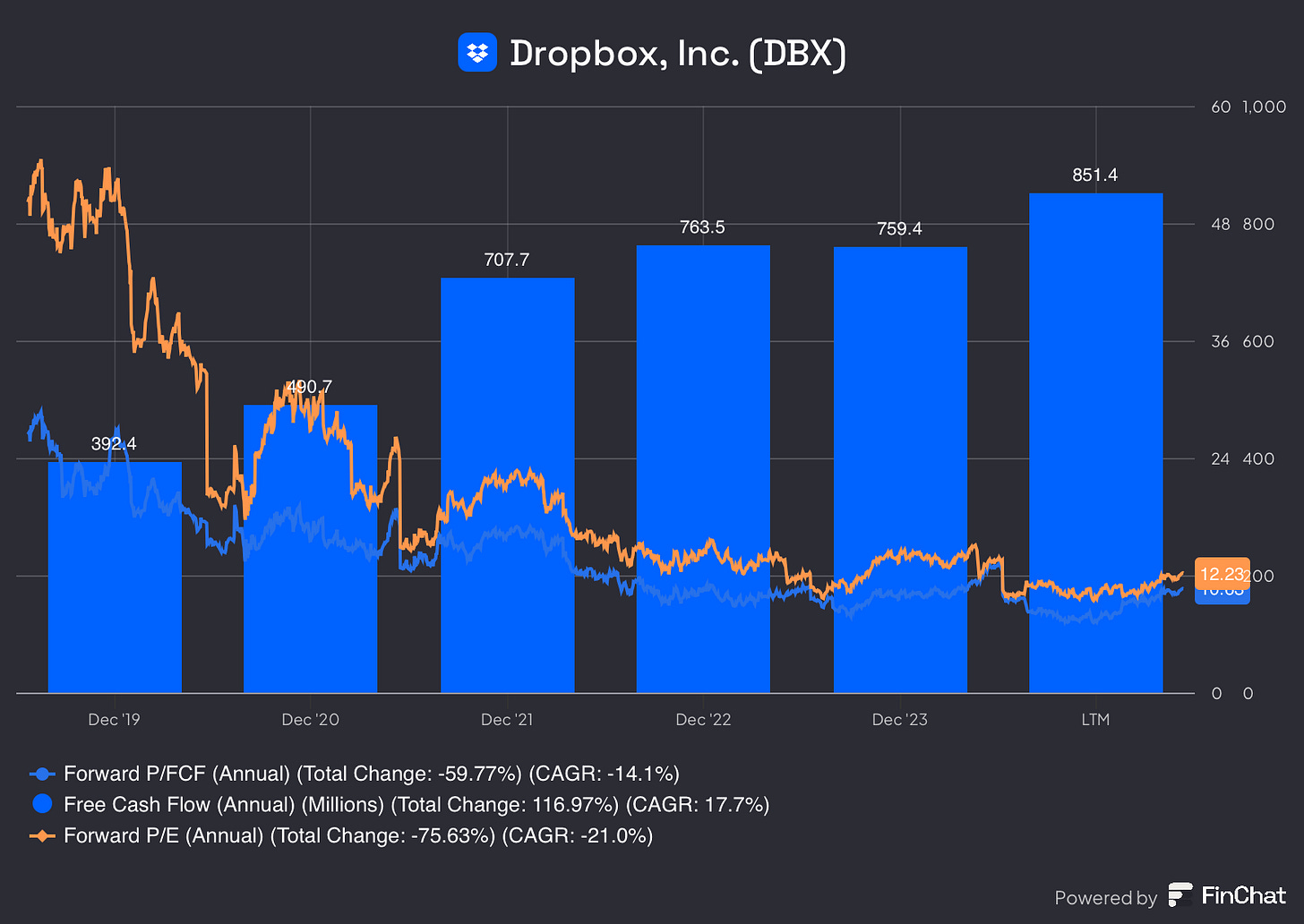Deep Dive into Dropbox (DBX)
Dropbox (NASDAQ: DBX) is a mature SaaS company generating over $2.5 billion in annual revenue, with profitability metrics that rival some of the best in the software industry.
Introduction
In 2007, an MIT student, Drew Houston, was on a bus ride to New York when he realized he’d forgotten his USB drive. Frustrated by the inconvenience of juggling flash drives and emailing files to himself, Houston began sketching out a vision for a simple, seamless solution that would allow people to access their files anywhere. That vision became Dropbox, a company that started as a scrappy startup and grew into one of the most iconic names in the cloud storage and collaboration space.
Today, Dropbox (NASDAQ: DBX) is a mature SaaS company generating over $2.5 billion in annual revenue, with profitability metrics that rival some of the best in the software industry. Despite this, Dropbox trades at a relatively cheap valuation compared to peers, with a price-to-earnings and price-to-free-cash-flow multiple that reflects skepticism about its growth potential. This discount presents an opportunity for investors who believe in Dropbox’s ability to continue expanding ARPU, enhancing its enterprise offerings, and executing capital returns through share buybacks. But as it competes against tech giants like Google, Microsoft, and Apple, Dropbox faces the challenge of carving out a defensible niche while sustaining long-term growth.
This deep dive explores the history, business model, financials, competitive positioning and future prospects of Dropbox to determine whether this company, often overlooked by Wall Street, might just be a hidden compounder.
A Brief History of Dropbox
2007: The Beginning
The Dropbox story begins with Drew Houston’s problem-solving instincts. After returning from his bus trip, Houston began coding a prototype for a cloud storage solution that prioritized simplicity, reliability, and cross-platform accessibility. He later teamed up with his MIT classmate, Arash Ferdowsi, and together they launched Dropbox at Y Combinator, a prestigious startup accelerator, in 2008.
Dropbox gained traction almost immediately, thanks to its intuitive drag-and-drop functionality and a well-timed viral video campaign. The company focused on building an emotional connection with its users, marketing itself as a “magic folder” that simplified digital life.
2009–2014: Exponential Growth
By 2011, Dropbox had over 50 million users, and by 2013, that number had skyrocketed to 200 million. Unlike competitors that focused on enterprise customers early on, Dropbox took a bottom-up approach. It first attracted individual users with its freemium model, then expanded into teams and businesses.
Dropbox raised venture capital at an aggressive pace during this period, achieving a $10 billion valuation by 2014.
2015–2018: The IPO Years
The mid-2010s marked a turning point for Dropbox. The company faced intense competition from giants like Google Drive and Microsoft OneDrive, which offered similar services at lower prices (or bundled with productivity software).
To differentiate itself, Dropbox pivoted to focus on collaboration tools and the enterprise market. Products like Dropbox Paper were launched to expand beyond storage.
In 2018, Dropbox went public on the Nasdaq under the ticker DBX, becoming one of the first major SaaS IPOs of the year. The IPO was well-received, with shares debuting at $21 and rising over 35% on the first day of trading.
2019–2024: Maturation and Strategic Pivots
Post-IPO, Dropbox began transitioning into a cash-generative, mature SaaS business. The company shifted its focus toward operational efficiency, leveraging its scale to improve profit margins while maintaining steady revenue growth. This period was marked by a deliberate move to diversify its product offerings and solidify its presence in the enterprise market. Key acquisitions, such as HelloSign in 2019 and DocSend in 2021, allowed Dropbox to expand beyond traditional file storage into high-growth areas like e-signatures and document analytics. These moves demonstrated a strategic pivot to creating an ecosystem of productivity tools tailored for businesses and creative professionals.
Dropbox also implemented aggressive cost-management initiatives, culminating in a 20% workforce reduction in 2024. This restructuring, paired with a $1.2 billion share buyback program, signaled its focus on maximizing shareholder value while doubling down on AI-driven innovation. By integrating AI features such as smart search and workflow automation, Dropbox positioned itself as a forward-looking SaaS company prepared to meet the evolving demands of remote work and digitization.
Business Overview
Dropbox’s business model combines the widely adopted freemium-to-premium strategy with a strong focus on enterprise solutions, reinforced by targeted acquisitions. This approach allows Dropbox to cater to both individual consumers and businesses, scaling its offerings from basic file storage to advanced workflow solutions that address complex enterprise needs.
Keep reading with a 7-day free trial
Subscribe to Coughlin Capital to keep reading this post and get 7 days of free access to the full post archives.






